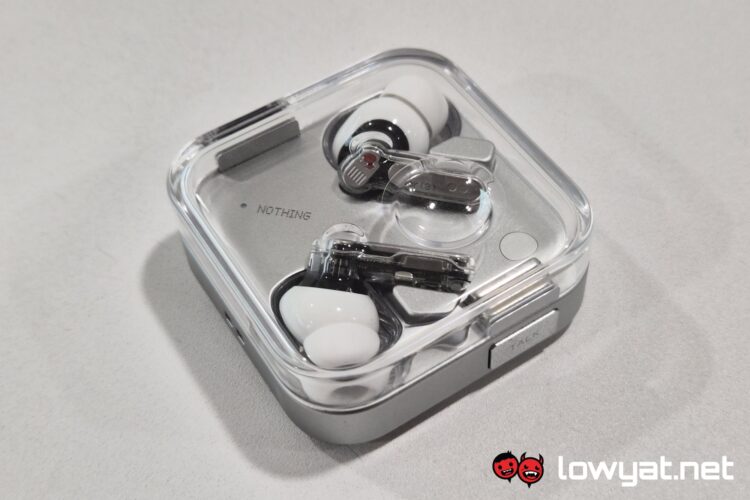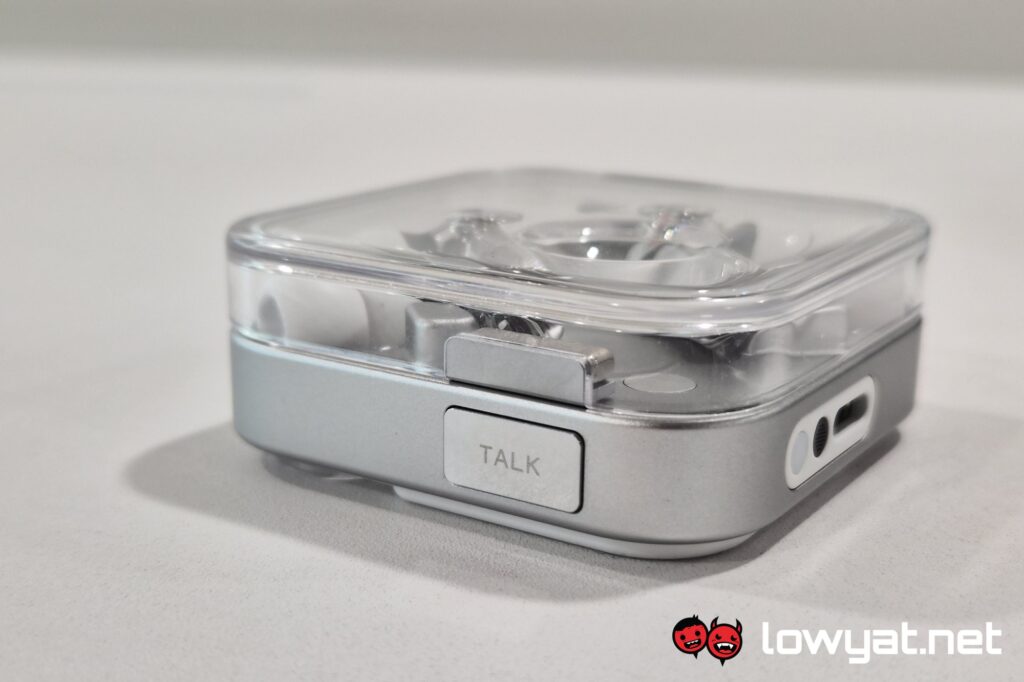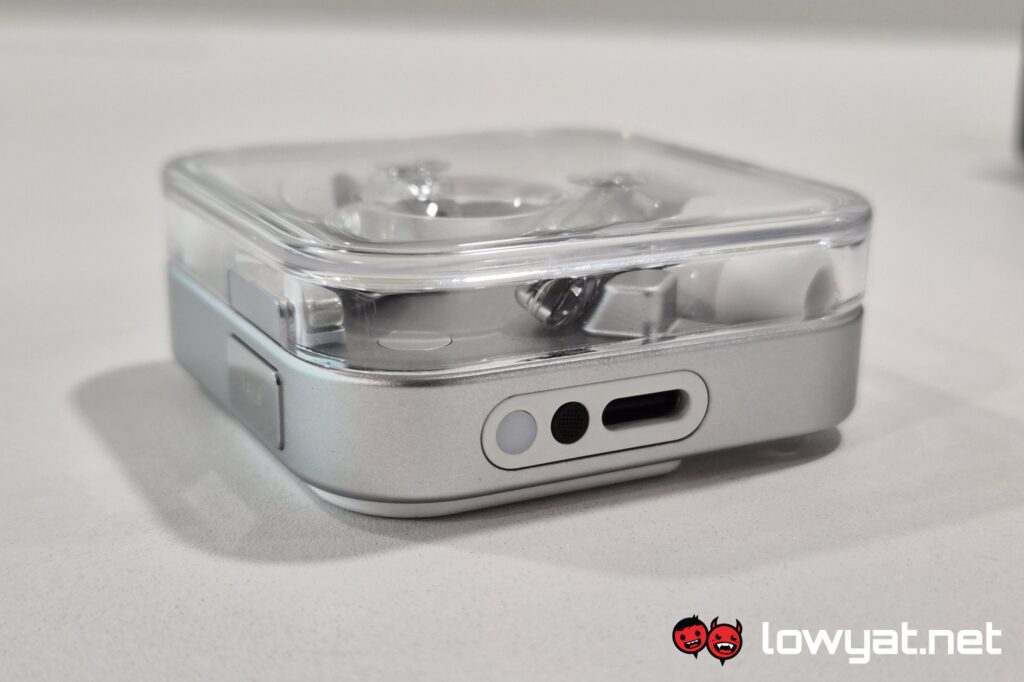The Nothing Ear (3) launched in the latter half of September to many jokes about it being the fourth iteration. While we’re not here to discuss whether the flip-flopping in the naming convention was daft (it was), I can tell you this – there are improvements across the board to be found here. As it should too, considering the RM100 increase in its asking price over the preceding numberless model.
The extent of the improvements though, you mileage may vary on that. Which makes the task of answering the old question of “should I buy it?” a bit tricky. This is simply because of its awkward price point of RM759. While we’ll eventually get to that, the easier questions to answer are “what is it?” and “is it any good?” And on that note, let’s find out.
What Is It?
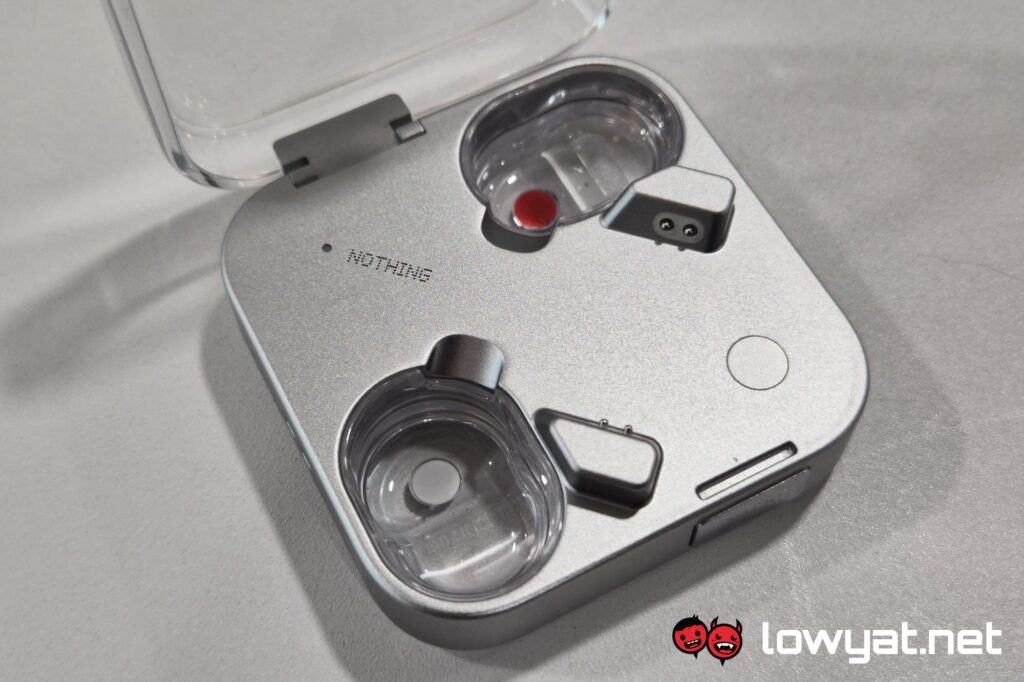
The Nothing Ear (3) continues the design language of the series for the most part. Making it a bit easer for the sake of comparison is the company passing us the white colourway for the purpose of this review. With that, the immediately obvious difference with the white colourway compared to the previous unnumbered model is that most of the white parts of the case here has been swapped out.
In its place is something that looks like either silver or nickel. You still get white on the underside, as well as the bits surrounding the charging port, but that’s about it. You can also see a bit of this on the stems of each earbud, though it’s split into two metallic pieces instead. Left and right are still denoted by the white and red dots, on both the earbuds and the case.
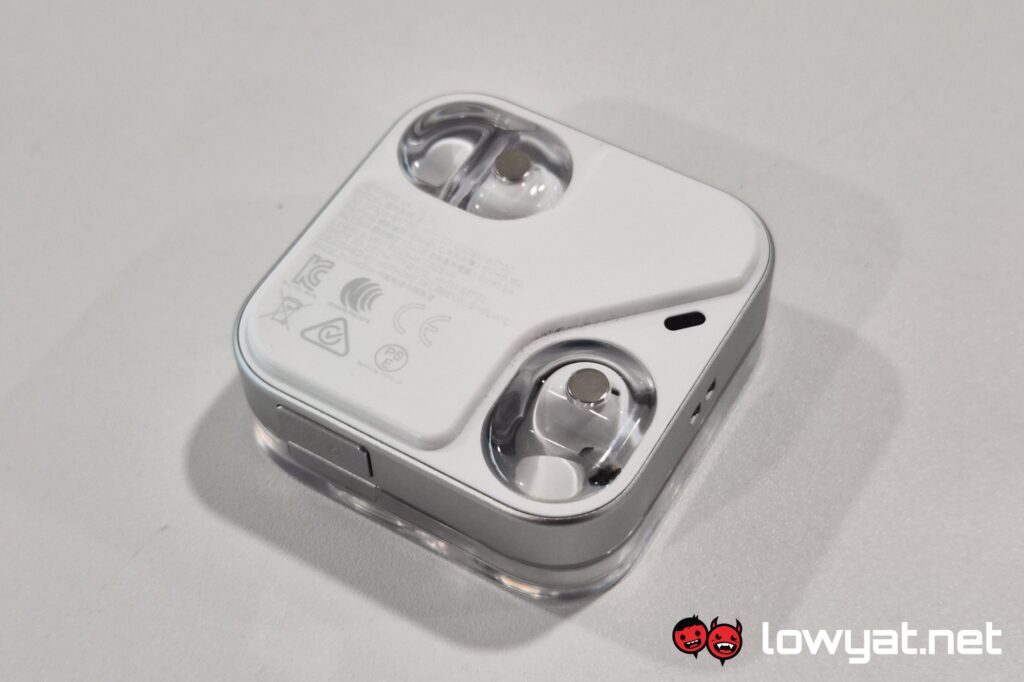
If you prefer a little less colour variation to the Nothing Ear (3), then perhaps the black colourway is more your speed. Naturally the white bits on the buds themselves have been turned to black for a more uniform look. It’s a similar story with the case, and most of the white and metallic bits here are also in black.
Is It Any Good?
The short answer here is yes, but to varying degrees. Straight out of the box, the Nothing Ear (3) sounds a lot worse than its asking price would indicate. Then you download the Nothing X companion app and look for equaliser presets. And then you discover that choosing anything but the “More Treble” setting results in very muffled sounds. This includes the default “Balanced” setting. The setting you want for not only clarity but also a balanced sound signature is the aforementioned “More Treble” setting.
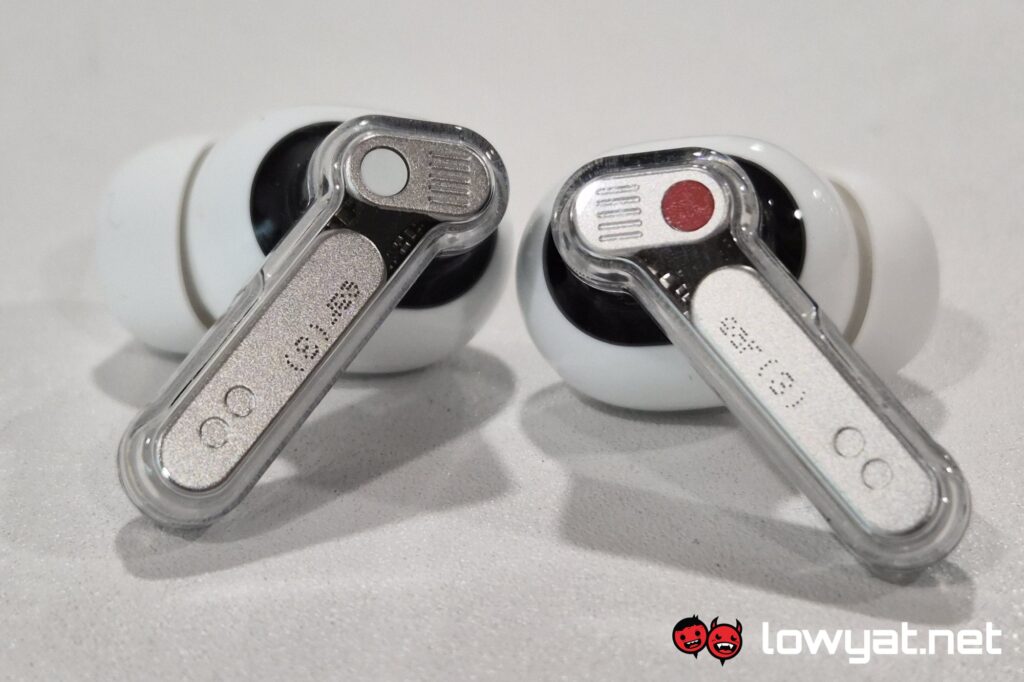
Things get better from here, as the only thing left to do is the Personalised Sound Profile feature. This makes you take a short hearing test – for each ear – to truly tune the Nothing Ear (3) for your ears. Making things better is that this is independent of the equaliser, and you can freely toggle it on or off. The cherry on top, though small in impact in comparison, is Bass Enhancement. With these settings, you get every crisp detail out of YOUR COLOUR, MY COLOUR by Suzuki Konomi and Ito Kashitaro. Though perhaps one downside to this sound signature is that sound staging can feel pretty cramped.
Pinch controls make a return, in all of its customisable glory. That being said, the default settings are intuitive enough that you shouldn’t need to mess with it too much. Which brings me to the Transparency mode, activated with a long pinch on either stem. This is among the best of its kind, natural-sounding to the point that I question if I have the Nothing Ear (3) on at times. My own voice does tend to sound louder than it should, but that’s about it.
What’s The Catch?
The biggest one in the list is definitely the battery life. Rated at 5.5 hours, it’s quite the downgrade from the unnumbered entry and its 8.5-hour rating. I’ve had the opportunity – and misfortune depending on perspective – of having the Nothing Ear (3) on for about five hours before I got the low battery warning ping, so the official rating sounds about right. Of course, that’s before switching over to LDAC mode. This not only requires a reboot of the buds, but it also further shortens their battery life.
Then there are the features within the Nothing X app itself. The faux spatial audio does give tracks better sound staging, but everything else suffers for it. This is because it turns off Bass Enhancement, but more importantly, forces the equaliser setting back to Balanced. Which, as mentioned, makes everything sound muffled.
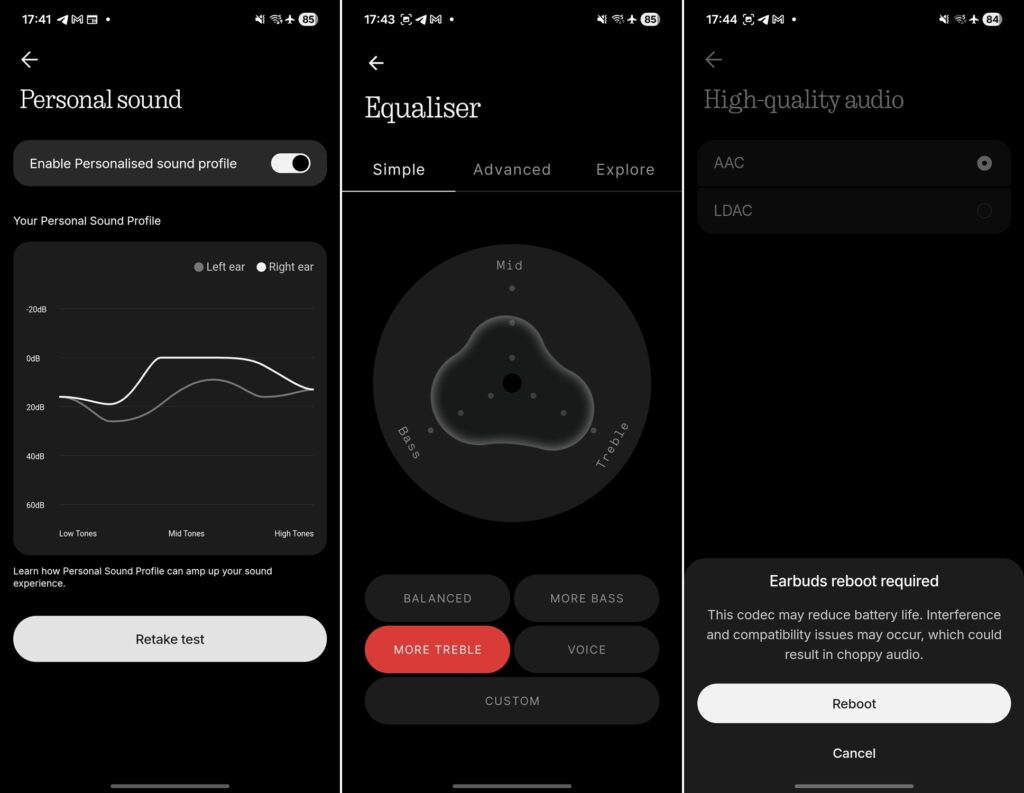
Finally, there’s the whole Super Mic gimmick. The gimmick here revolves around the mic on the case, and the accompanying Talk button. When engaged, it turns off the mics on the buds, letting you talk into a mic that you can hold directly in front of your mouth. On the surface, the idea is to give the person you’re talking to clearer sound, as you are speaking into the mic directly.
In practice though, there’s the potential for your voice to sound worse than just using the mics on the buds if you’re not holding the case close to your mouth, or if it’s angled wrong. There’s also the problem if you leave the feature on, and the case rocks around in your pocket and inadvertently hits the Talk button.
Should I Buy It?
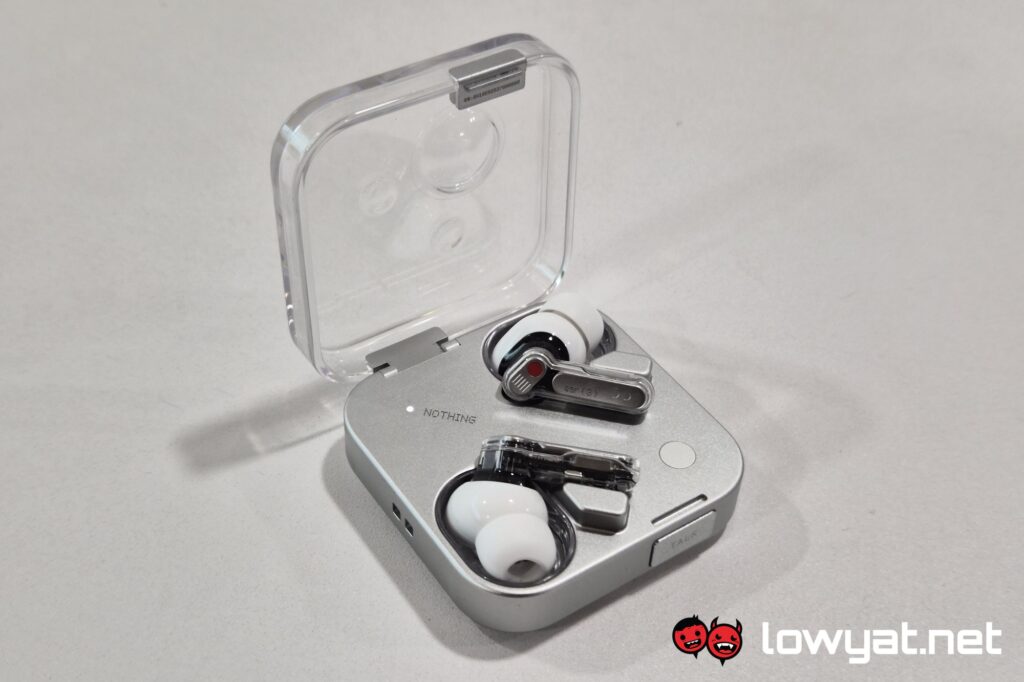
The Nothing Ear (3) is a tough one. On one hand, it provides great sound that’s clear and balanced, even if it’s limited to one equaliser preset. It also has a very good Transparent mode – among the best in quite awhile. It also comes with features that are either uncommon, such as the hearing test-based sound profile, or outright unique, like the questionable Super Mic.
But on the flip side, 5.5 hours of playback time is really short, especially when its competitors can do that much in talk time. Then there’s also the matter of its price. At RM759, it’s putting itself in between the mid-range and premium options of competitor brands. Boiling it down though, I’d say this would be much easier to recommend if it had better battery life.

